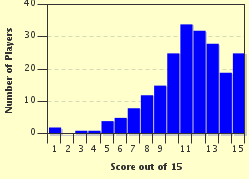Quiz Answer Key and Fun Facts
1. We'll start off with a man who is considered the father of twentieth century broadcast journalism. Who is this man, whose reports from London for CBS radio during World War Two always started out with the dramatic words, "This is London"?
2. On September 2, 1963, TV news came of age when the "CBS Evening News" became the first half-hour nightly TV news broadcast. Who was the anchor of this show, a man who, during his 19-year tenure as the CBS anchor man, became known as "the most trusted man in America"?
3. The new network C-SPAN was created in 1979 to cover the U.S. Congress. Who is the visionary journalist who created this network and served as its CEO until 2012?
4. Who was the author of the first syndicated gossip column, which ran from the 1920s to the 1960s, and was syndicated in over 2,000 newspapers and had fifty million readers a day?
5. Which giant of twentieth century journalism wrote the runaway bestseller "The Rise and Fall of the Third Reich", a history of Nazi Germany?
6. A seemingly minor burglary at the Watergate office complex in Washington, D.C., on June 17, 1972, led to two young reporters embarking on an extensive investigation that eventually led to the resignation of President Richard Nixon. These reporters, Bob Woodward and Carl Bernstein, worked for which newspaper?
7. Which giant of early twentieth-century sports journalism penned the immortal words, "For when the One Great Scorer comes/To mark against your name,/He writes - not that you won or lost -/But how you played the Game."
8. The term "sports journalism" was pretty much of an oxymoron until the 1950s, when a former New York lawyer burst onto the scene with his radio show "Speaking of Sports". Who was this bombastic, egotistical man, known primarily for broadcasting boxing and football events, who often boasted that he was only "telling it like it is"?
9. Which longtime film critic of the "Chicago Sun-Times" was the first film critic to win a Pulitzer Prize for film criticism?
10. Who was the longtime film critic for "The New Yorker" magazine, whose many books of film criticism include "Deeper into Movies" and "When the Lights Go Down"?
11. A branch of journalism which came into vogue in the twentieth century was the "journalistic novel", or "non-fiction novel". Truman Capote popularized this genre with his 1966 bestseller, "In Cold Blood". This book described the murders of a family in which state?
12. The journalistic novel reached new heights when an author, originally made famous by his 1948 novel "The Naked and the Dead", received Pulitzer Prizes for "The Armies of the Night"(1968) and "The Executioner's Song"(1980). Who was this outspoken and oft-married author?
13. In 1936 photographer Dorothea Lange was driving home in the rain at the end of a month-long assignment taking photographs documenting the effect of the Great Depression on people, when she passed a sign saying "Pea-Pickers' Camp". She drove on, but twenty miles later turned around and went back. One of the pictures she then took is said to be the most famous photo in the Library of Congress. What is the name of this iconic photograph?
14. Photographer Joe Rosenthal captured an iconic moment on February 23, 1945, with his picture of five U.S. marines raising the American flag on a Pacific island. Which island was this?
15. Often journalists are required to cover negative news--crime, natural disasters, war, and other tragedies. On August 14, 1945, "Life" magazine photographer Alfred Eisenstaedt had the unusually happy assignment of covering the joyous celebration marking the end of World War Two. In which New York landmark did Eisenstaedt take his famous picture of a sailor kissing an unidentified female?
Source: Author
chessart
This quiz was reviewed by FunTrivia editor
bloomsby before going online.
Any errors found in FunTrivia content are routinely corrected through our feedback system.

